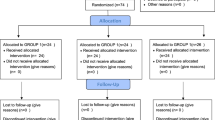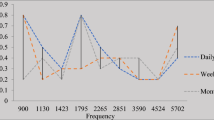Abstract
Purpose
The aim of this study was to examine whether the medial olivocochlear hearing system functions, the high frequency hearing thresholds and speech discrimination in noise performance can guide us in assessing the risk of hearing loss among violinists. It is aimed to investigate possible hearing damage that is not reflected in pure tone hearing thresholds in violinists.
Methods
The participants (n = 50) who have normal hearing and the ages of 18–30 were included in this study in two groups: violinists and controls who are unrelated to music. High frequency audiometer, auditory figure ground test (AFG) for speech discrimination in noise performance, Distortion Product Otoacoustic Emission (DPOAE) and contralateral suppression on DPOAE for medial olivocochlear system function tests were applied to all participants as well as routine audiological tests.
Results
The high frequency hearing thresholds were obtained higher in violinists compared to the controls. In violinists, the AFG test scores and the suppression amount at 1 kHz were lower than the controls. In addition, DPOAE responses at 4–6 kHz were obtained lower in violinists (p < 0.05).
Conclusion
The reason for high frequency hearing loss, decreased DPOAE response amplitudes, and poor medial olivocochlear function in violinists can be explained by the long-term exposure to high-level noise caused by the violin, one of the closest musical instruments. Routine and comprehensive audiological follow-up is crucial for musicians.

Similar content being viewed by others
References
Brown CJ, Jeon E-K, Driscoll V, Mussoi B, Deshpande SB, Gfeller K, Abbas P (2017) Effects of long-term musical training on cortical evoked auditory potentials. Ear Hear 38:e74
Bulut E, Öztürk G, Taş M, Türkmen M, Gülmez Z, Öztürk L (2019) Medial olivocochlear suppression in musicians versus non-musicians. Physiol Int 106:151–157
Couth S, Prendergast G, Guest H, Munro KJ, Moore DR, Plack CJ, Ginsborg J, Dawes P (2020) Investigating the effects of noise exposure on self-report, behavioral and electrophysiological indices of hearing damage in musicians with normal audiometric thresholds. Hear Res 395:021
de Oliveira Gonçalves CG, Lacerda ABM, Zeigelboim BS, Marques JM, Luders D (2013) Auditory thresholds among military musicians: Conventional and high frequency. CEP 82410:460
Di Stadio A, Dipietro L, Ricci G, Della Volpe A, Minni A, Greco A, De Vincentiis M, Ralli M (2018) Hearing loss, tinnitus, hyperacusis, and diplacusis in professional musicians: a systematic review. Int J Environ Res Public Health 15:2120
Dünnwald H (1991) Deduction of objective quality parameters on old and new violins. Catgut Acoust Soc J 1:1–5
Escobar J, Mussoi BS, Silberer AB (2020) The effect of musical training and working memory in adverse listening situations. Ear Hear 41:278–288
Fleming D, Belleville S, Peretz I, West G, Zendel BR (2019) The effects of short-term musical training on the neural processing of speech-in-noise in older adults. Brain Cogn 136:592
Guinan JJ Jr (2006) Olivocochlear efferents: anatomy, physiology, function, and the measurement of efferent effects in humans. Ear Hear 27:589–607
Hall JW (2000) Handbook of otoacoustic emissions. Cengage Learning, Boston
Høydal EH, LeinStørmer CC, Laukli E, Stenklev NC (2017) Transient evoked otoacoustic emissions in rock musicians. Int J Audiol 56:685–691
Jansen E, Helleman H, Dreschler W, de Laat J (2009) Noise induced hearing loss and other hearing complaints among musicians of symphony orchestras. Int Arch Occup Environ Health 82:153–164
Jansson E, Bork I, Meyer J (1986) Investigations into the acoustical properties of the violin. Acta Acust Acust 62:1–15
Kähäri K, Zachau G, Eklöf M, Sandsjö L, Möller C (2003) Assessment of hearing and hearing disorders in rock/jazz musicians: evaluación de la audición y de los problemas auditivos en músicos de rock y jazz. Int J Audiol 42:279–288
Kähäri KR, Axelsson A, Hellström P-A, Zachau G (2001) Hearing development in classical orchestral musicians. A follow-up study. Scand Audiol 30:141–149
Kirk EC, Smith DW (2003) Protection from acoustic trauma is not a primary function of the medial olivocochlear efferent system. J Assoc Res Otolaryngol 4:445–465
Kumar P, Grover V, Sanju HK, Sinha S (2016) Assessment of rock musician’s efferent system functioning using contralateral suppression of otoacoustic emissions. World J Otorhinolaryngol-Head Neck Surg 2:214–218
Lüders D, de Oliveira Gonçalves CG, de Moreira Lacerda AB, Ribas Â, de Conto J (2014) Music students: conventional hearing thresholds and at high frequencies. Braz J Otorhinolaryngol 80:296–304
Madsen SM, Marschall M, Dau T, Oxenham AJ (2019) Speech perception is similar for musicians and non-musicians across a wide range of conditions. Sci Rep 9:1–10
Maison S, Micheyl C, Andéol G, Gallégo S, Collet L (2000) Activation of medial olivocochlear efferent system in humans: influence of stimulus bandwidth. Hear Res 140:111–125
Maison SF, Luebke AE, Liberman MC, Zuo J (2002) Efferent protection from acoustic injury is mediated via α9 nicotinic acetylcholine receptors on outer hair cells. J Neurosci 22:10838–10846
Meha-Bettison K, Sharma M, Ibrahim RK, Mandikal Vasuki PR (2018) Enhanced speech perception in noise and cortical auditory evoked potentials in professional musicians. Int J Audiol 57:40–52
Morais D, Benito JI, Almaraz A (2007) Acoustic trauma in classical music players. Acta Otorrinolaringol (Engl Ed) 58:401–407
Morse-Fortier C, Parrish MM, Baran JA, Freyman RL (2017) The effects of musical training on speech detection in the presence of informational and energetic masking. Trends Hear 21:2331216517739427
Otsuka S, Tsuzaki M, Sonoda J, Tanaka S, Furukawa S (2016) A role of medial olivocochlear reflex as a protection mechanism from noise-induced hearing loss revealed in short-practicing violinists. PLoS ONE 11:e0146751
Pouryaghoub G, Mehrdad R, Pourhosein S (2017) Noise-induced hearing loss among professional musicians. J Occup Health 59:33–37
Rosanowski F, Eysholdt U (1996) In situ sound pressure measurement in a professional violinist with bilateral tinnitus. Laryngorhinootologie 75:514–516
Royster JD, Royster LH, Killion MC (1991) Sound exposures and hearing thresholds of symphony orchestra musicians. J Acoust Soc Am 89:2793–2803
Sayler SK, Roberts BJ, Manning MA, Sun K, Neitzel RL (2019) Patterns and trends in osha occupational noise exposure measurements from 1979 to 2013. Occup Environ Med 76:118–124
Schmidt JH, Paarup HM, Bælum J (2019) Tinnitus severity is related to the sound exposure of symphony orchestra musicians independently of hearing impairment. Ear Hear 40:88
Schmidt JH, Pedersen ER, Paarup HM, Christensen-Dalsgaard J, Andersen T, Poulsen T, Bælum J (2014) Hearing loss in relation to sound exposure of professional symphony orchestra musicians. Ear Hear 35:448–460
Schmuziger N, Patscheke J, Probst R (2007) An assessment of threshold shifts in nonprofessional pop/rock musicians using conventional and extended high-frequency audiometry. Ear Hear 28:643–648
Skoe E, Camera S, Tufts J (2019) Noise exposure may diminish the musician advantage for perceiving speech in noise. Ear Hear 40:782–793
Slater J, Kraus N (2016) The role of rhythm in perceiving speech in noise: A comparison of percussionists, vocalists and non-musicians. Cogn Process 17:79–87
Washnik NJ, Bhatt IS, Phillips SL, Tucker D, Richter S (2020) Evaluation of cochlear activity in normal-hearing musicians. Hear Res 395:108027
Wenmaekers R, Nicolai B, Hornikx M, Kohlrausch A (2017) Why orchestral musicians are bound to wear earplugs: about the ineffectiveness of physical measures to reduce sound exposure. J Acoust Soc Am 142:3154–3164
Yoo J, Bidelman GM (2019) Linguistic, perceptual, and cognitive factors underlying musicians’ benefits in noise-degraded speech perception. Hear Res 377:189–195
Zhang F, Roland C, Rasul D, Cahn S, Liang C, Valencia G (2019) Comparing musicians and non-musicians in signal-in-noise perception. Int J Audiol 58:717–723
Funding
There is no funding source.
Author information
Authors and Affiliations
Corresponding author
Ethics declarations
Conflict of interest
The authors declare that they have no conflict of interest.
Ethical approval
The Non-Interventional Clinical Research Ethics Committee of Gazi University approved this study with the decision number 507.
Informed consent
The informed consent approvals of all participants were obtained from themselves.
Additional information
Publisher's Note
Springer Nature remains neutral with regard to jurisdictional claims in published maps and institutional affiliations.
Rights and permissions
About this article
Cite this article
Gündüz, B., Yıldırım Gökay, N., Orhan, E. et al. The comprehensive audiological evaluation in young violinists: the medial olivocochlear system, high frequency thresholds, and the auditory figure ground test. Eur Arch Otorhinolaryngol 279, 3837–3845 (2022). https://doi.org/10.1007/s00405-021-07122-8
Received:
Accepted:
Published:
Issue Date:
DOI: https://doi.org/10.1007/s00405-021-07122-8




